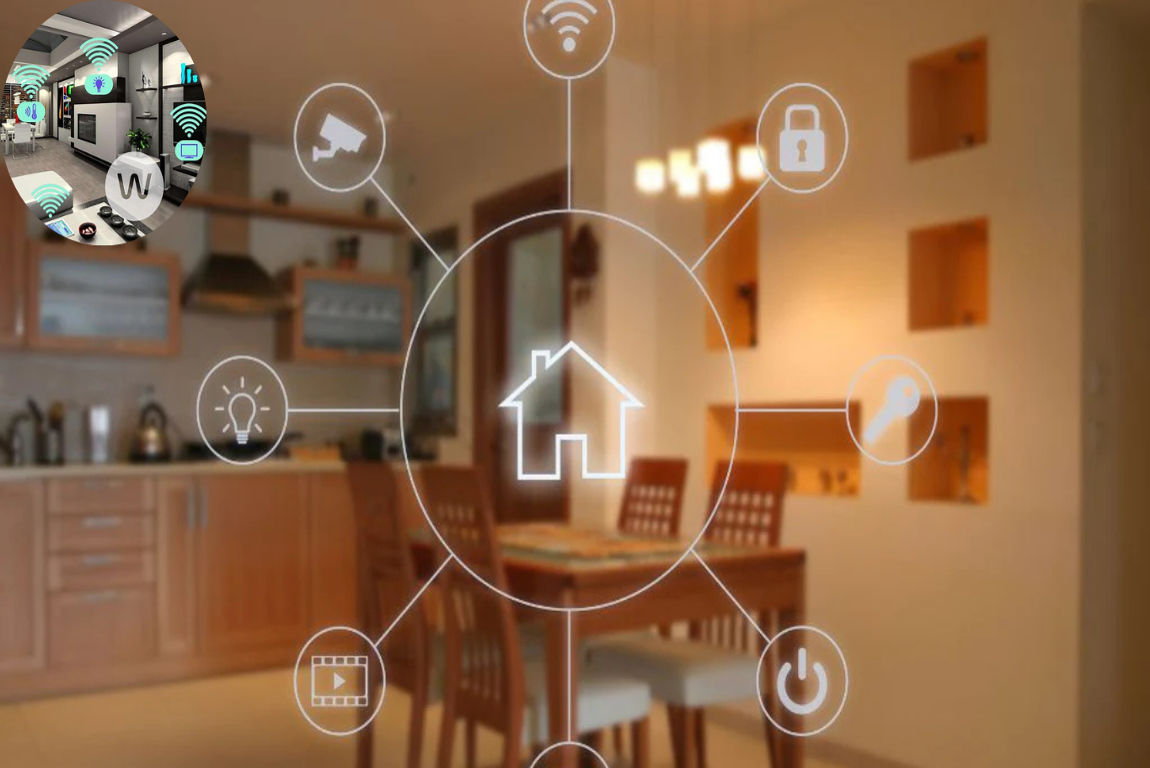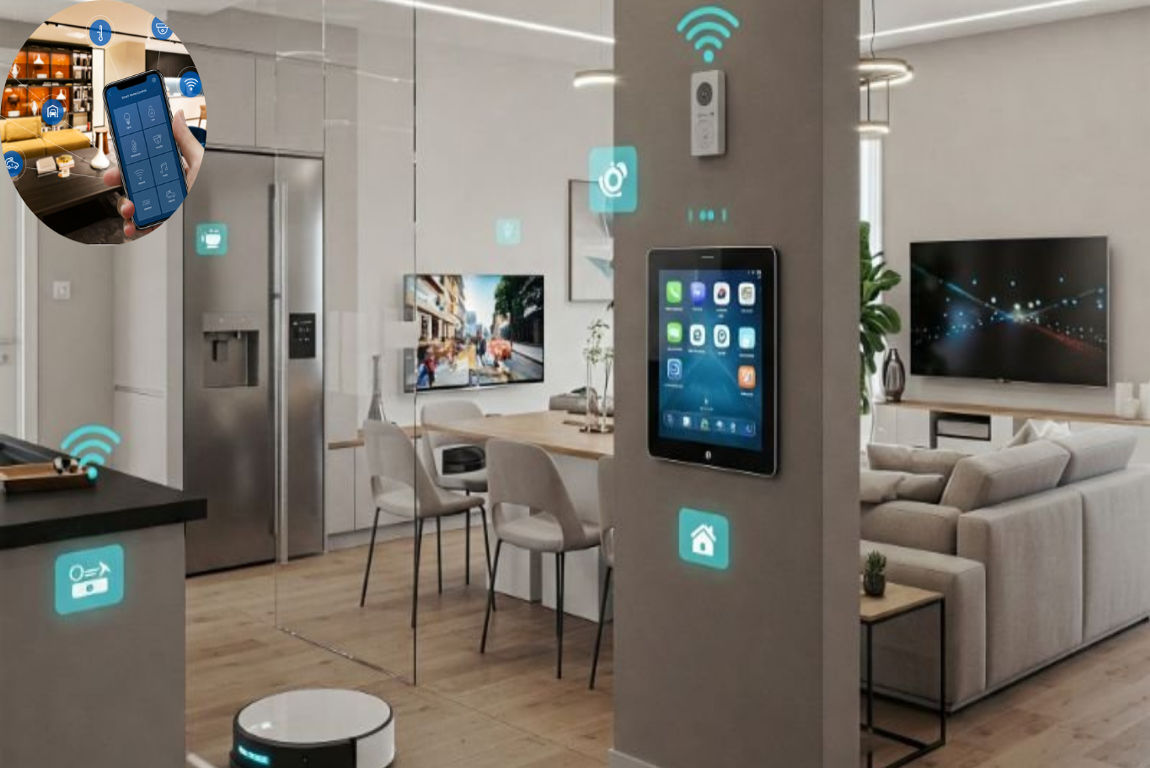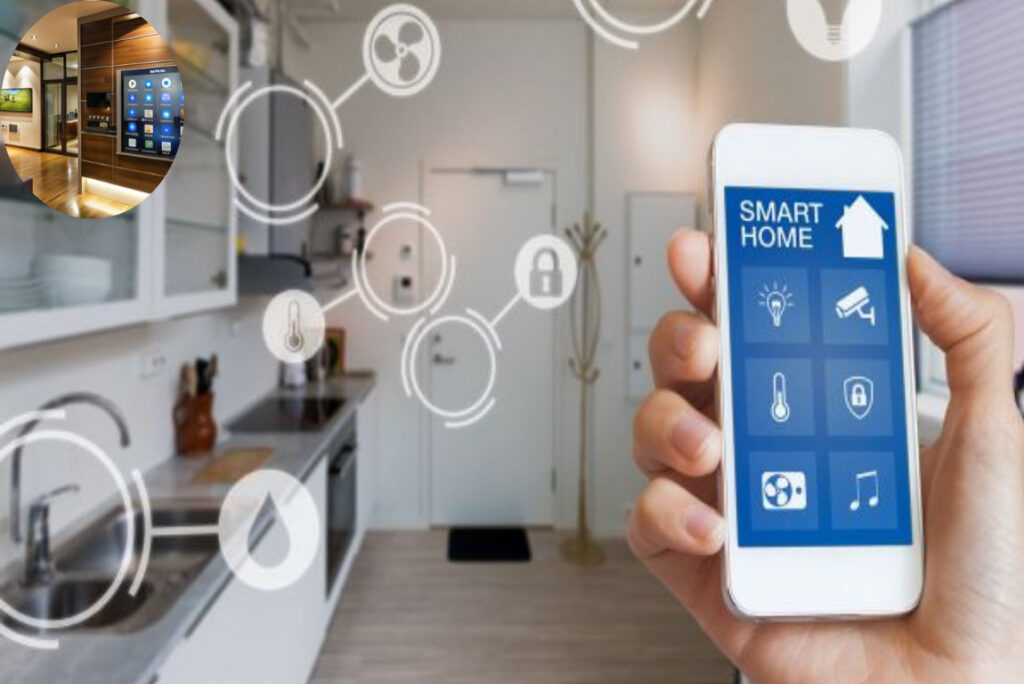Home automation has revolutionized the way we live, making our homes more innovative, more efficient, and incredibly convenient. In 2025, this trend has continued to grow stronger with advancements in technology and the increasing affordability of smart devices. Whether you’re looking to enhance comfort, boost security, reduce energy consumption, or modernize your space, home automation ideas can transform your living environment.
What is Home Automation?

Definition and Explanation
Home automation refers to the use of technology to control and automate various household devices and systems, including lighting, security, climate control, and entertainment. By connecting these devices to a centralized hub or app, you can manage them remotely or even set them to operate automatically based on specific triggers.
A Brief History and Evolution
The concept of home automation isn’t new. It dates back to the mid-20th century when devices such as remote-controlled garage doors and programmable thermostats first emerged. However, the real revolution began in the 21st century with the rise of smart home technology, driven by advancements in the Internet of Things (IoT). Today, smart devices are more affordable, accessible, and capable than ever.
Key Benefits of Home Automation
- Convenience: Control devices with your voice, smartphone, or through automation.
- Security: Enhance home safety with smart locks, cameras, and alarms.
- Energy Savings: Smart thermostats and lighting can reduce electricity bills.
- Modern Living: Turn your home into a futuristic, interconnected space.
Why Consider Home Automation in 2025?

Current Trends in Smart Home Technology
The home automation market is expected to experience significant growth in 2025. Innovations like AI-powered devices, geofencing, and voice assistants have made smart homes more intuitive and user-friendly. More importantly, there is a noticeable shift toward DIY-friendly solutions that enable homeowners to set up automation systems without professional assistance.
You may also read (who are the experts in model home decoration).
Enhanced Lifestyle and Efficiency
Home automation is no longer a luxury—it’s becoming a necessity for modern living. Imagine waking up to lights that gradually brighten, curtains that open automatically, and your coffee brewing, all without lifting a finger. These ideas not only make life more convenient but also help you save time and energy.
Affordability and Accessibility
Compared to previous years, smart devices are now more budget-friendly, making home automation more accessible to a broader range of households. Whether you’re starting small with smart plugs or going all-in with a fully automated ecosystem, there’s an option for everyone.
Getting Started: Planning Your Home Automation Journey
Before diving into automation projects, it’s crucial to have a clear plan. Follow these steps to ensure a smooth start:
Assess Your Needs and Goals
Begin by identifying areas of your home that could benefit from automation. Are you looking for added security, energy efficiency, or entertainment features? Knowing your priorities will help you focus your efforts and allocate your budget effectively.
Set a Budget
Smart devices are available at a wide range of prices. Determine how much you’re willing to invest in your home automation projects. Start small with essential devices and expand gradually as your budget allows.
Choose the Right Smart Home Ecosystem
Choose a platform that suits your preferences and is compatible with the majority of devices. Popular options include:
- Amazon Alexa
- Google Home
- Apple HomeKit
Each ecosystem has its strengths, so choose one based on factors such as ease of use, device compatibility, and voice assistant preferences.
Understand Connectivity Options
Smart devices rely on various wireless communication protocols. Here’s a quick comparison:
ProtocolFeatures
Wi-Fi works at high speed directly with the internet, but it consumes more power.
Zigbee Low power connects multiple devices in a mesh network.
Z-Wave is similar to Zigbee but with a better range and slightly higher costs.
Bluetooth Is Ideal for short-range connections, such as those between speakers or locks.
Understanding these options will help you choose devices that integrate seamlessly.
Essential Home Automation Devices and Tools

To build a functional smart home, you’ll need the right tools and devices. Here are some essentials:
- Smart Hubs and Controllers: The brain of your smart home (e.g., Amazon Echo, Google Nest Hub).
- Voice Assistants: Control devices with voice commands (e.g., Alexa, Google Assistant, Siri).
- Smart Sensors: Detect motion, temperature, or humidity for automation triggers.
- Smart Switches, Plugs, and Bulbs: Automate lighting and appliances for convenience and energy savings.
You may also read (unlocking gla the key to commercial home real estate).
- Security Cameras and Alarms: Enhance home safety with remote monitoring and alerts.
Step-by-Step Guide: Implementing Home Automation Ideas
Smart Lighting Automation
Lighting is one of the easiest and most impactful areas to automate.
- Benefits: Save energy, create ambiance, and enhance convenience.
- Types of Smart Lighting:
- Smart bulbs, like Philips Hue.
- Smart switches that connect to traditional lights.
- LED strips for creative lighting effects.
- Setup Ideas:
- Create routines, such as dimming lights for movie nights.
- Use motion sensors for automatic on/off in hallways.
Voice-Activated Home Control
Voice assistants like Alexa or Google Assistant can centralize control over multiple devices.
- Popular Commands:
- “Turn off the lights.”
- “Set the thermostat to 72 degrees.”
- “Start the coffee maker.”
- Accessibility Benefits: Voice control is beneficial for older people or individuals with disabilities.
Automated Security Systems
Smart security devices ensure peace of mind. Key options include:
- Smart Locks and Doorbells: Lock/unlock doors remotely or see who’s at the door.
- Security Cameras: Monitor your home via your smartphone.
- Entry Sensors: Get alerts when doors or windows are opened unexpectedly.
Advanced Home Automation Ideas

For those who want to take automation to the next level, consider these advanced ideas:
Personalized Scenes and Routines
Set up custom routines for specific activities:
- A “Goodnight” routine that turns off all lights, locks doors and adjusts the thermostat.
- A “Work from Home” scene that powers up your computer, adjusts lighting, and plays background music.
Geofencing and Presence Detection
Automate actions based on your location:
- Lights turn on when you approach your home.
- Thermostats adjust when you leave or arrive.
Health, Wellness, and Accessibility
- Air quality monitors to ensure a healthy environment.
- Smart fitness trackers and automated workout routines.
- Devices tailored for elderly care, like reminders for medication.
Common Challenges and How to Overcome Them
Compatibility Issues
Not all devices work together. Stick to a single ecosystem or use hubs like SmartThings to bridge compatibility gaps.
Network Security
Protect your smart home by:
- Using strong passwords.
- Regularly updating device firmware.
- Setting up a separate Wi-Fi network for smart devices.
You may also read (how to style a sofa bed in your home).
